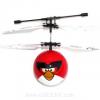- 0 replies
- 2,021 views
- Add Reply
- 4 replies
- 2,239 views
- Add Reply
- 1 reply
- 1,458 views
- Add Reply
- 1 reply
- 1,478 views
- Add Reply
- 3 replies
- 1,501 views
- Add Reply
DigitalGlobe Launches Maps API and Portal for Developers

By Lurker,
Digitalglobe announced a new product focused on the growing community of location-aware application developers. DigitalGlobe Maps API is a simple, cost-effective, subscription service for embedding satellite imagery, maps and other geospatial content into mobile and web apps.
Geospatial information is now a key feature of many consumer apps and powers a wide range of business intelligence tools. DigitalGlobe satellite imagery is already an essential part of the most popular online mapping se
Windows 10.0
By alqamy,
I would like to raise an inquiry with you about Windows 10.0. Did anybody started using it with ArcGIS 10.2 or later. Is there any prominent compatibility issues either with the software, extensions or the license manager? I hope that somebody on the list can elaborate.
Regards
Husam El Alqamy
HELP - Exporting Multiple Data Driven MXDs to PDFs using Python
By anay,
Hello,
I have several hundred data driven MXDs that I would like to export to PDF all at once using Python. Right now I have to open each MXD and export each map series one by one; this takes a lot of time, as you might imagine. I have been looking for readily available code for this process on the internet and have found none (even on ESRI). I am no coder so your assistance would be greatly appreciated.
Thank you,
Ana
State of the GNSS - Part 1 | GPS Modernization
By Effigis,


Author: Daniel Macias Valadez, GNSS Analyst at Effigis
Original text available here: http://bit.ly/1IYSbNY
GPS, being the pioneer of all Global Navigation Satellite Systems (GNSS), is the only system that has remained fully operational for civilian use for more than two decades. The number of civilian applications has exploded in recent years and its popularity is undisputed. Other GNSS have had issues (GLONASS during the end of the 90s and the 00s) or are still incomplete (Galileo, BeiDou)
ArcGIS crawler in Files for coordinates

By intertronic,
Hello,
does anyone knows an automatic method (probably python script), for looking into files content for coordinates in order to display the file in a map?
what I mean is, for example, to look into a word file, find the coordinates 66°N, 23°E and display them as a point in a map...
the files can be word, excel, powerpoint, textfiles and so on...
thanks for any sharing..
M.
-
Forum Statistics
8.7k
Total Topics43.4k
Total Posts





